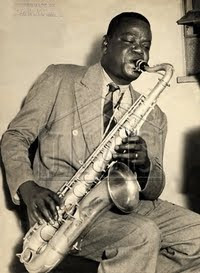A Tribute to Canhoto da Paraíba
 Recently I had the shown cd by Fernando Caneca, 'Visitando Canhoto da Paraíba' (Deckdisc), a great tribute to the music and guitar style of Chico Soares, the left-handed master of the violão from Pernambuco, better known as Canhoto da Paraíba. The cd was released in 2004, but according to the sleeve notes (- in Portuguese only) Fernando Caneca has been preparing these recordings since 1997, when he first discovered the music of Canhoto and started his study of the master. Fernando Caneca (b.1964) is from Pernambuco, too, has studied the violão (acoustic guitar) and given lectures at the Club de Choro Pernambuco, besides beeing an active musician in different music styles with his own groups and as an accompanist of various stars of contemporary MPB - he has even made a dissertation on the guitar style of Wes Mongomery!
Recently I had the shown cd by Fernando Caneca, 'Visitando Canhoto da Paraíba' (Deckdisc), a great tribute to the music and guitar style of Chico Soares, the left-handed master of the violão from Pernambuco, better known as Canhoto da Paraíba. The cd was released in 2004, but according to the sleeve notes (- in Portuguese only) Fernando Caneca has been preparing these recordings since 1997, when he first discovered the music of Canhoto and started his study of the master. Fernando Caneca (b.1964) is from Pernambuco, too, has studied the violão (acoustic guitar) and given lectures at the Club de Choro Pernambuco, besides beeing an active musician in different music styles with his own groups and as an accompanist of various stars of contemporary MPB - he has even made a dissertation on the guitar style of Wes Mongomery!
The music on the mentioned cd by Fernando Caneca features 13 compositions of the works by Canhoto - if you are a guitarist, the cd also has a pdf.file included of Caneca's transcriptions in sheet, a great resource for a closer study of Canhoto's guitar style. Caneca's renditions of Canhoto's pieces are great and a marvellous example of the rich tradition of different music styles from the North Eastern part of Brazil, choros as well as other notable genres. Caneca re-creates the almost funky atmosphere of Canhoto's own recordings of the pieces - here accompanied by elctric bass guitar and percussion. The cd is a peak point of acoustic guitar wizardry and will remain among my favorites for a long time. Highly recommended!
Tracklist:
1 - Visitando o Recife, 2 - Glória da Relâmpago, 3 - Tua Imagem, 4 - Dezenove de Março ,5 - Lembrança Que Ficou, 6 - Agudinho, 7 - Cordão Amigo, 8 - Tá Quentinho, 9 - Choro na Madrugada, 10 - Com Mais de Mil, 11 - Todo Cuidado é Pouco, 12 - O Grito do Mestre Sérgio, 13 - Forrobodó (fantasia Nordestina) Incidental: Pisando em Brasa
Jo












